Have you ever found yourself standing in front of an empty aquarium at a pet store and wondered what it is you would need to start a cherry shrimp tank? Many aspiring shrimp keepers grapple with questions Like this, so let’s answer them.
To start a cherry shrimp tank, you need to select an appropriate tank size, typically a 10-gallon tank for beginners. Ensure the water parameters are suitable for cherry shrimp, with a stable pH, temperature, and hardness. Choose a substrate that suits your tank setup and maintenance routine. Cycle the tank to establish beneficial bacteria and decorate it with shrimp-friendly plants and hides. Patience and regular monitoring are key to creating a thriving environment for your cherry shrimp.
Greetings, Shrimp Nation! Embarking on the journey of setting up a cherry shrimp tank is an exciting adventure filled with anticipation and a fair share of questions. It’s like standing at the edge of an unexplored territory, map in hand, ready to discover the unknown.
I remember the first time I set up my cherry shrimp tank. The myriad of decisions to make felt overwhelming. What size tank should I get? How do I ensure the water parameters are just right? What type of substrate should I use? The list seemed endless.
Over time, I realized that each question was a stepping stone, leading me deeper into the fascinating world of shrimp keeping. Each challenge I encountered was an opportunity to learn.
In this post, we’ll navigate this journey together. We’ll explore each aspect of setting up a cherry shrimp tank, from choosing the right tank size to selecting the perfect decorations. We’ll delve into the details, sharing personal experiences, triumphs, and lessons learned along the way.
So, let’s dive in, shrimplets! Our adventure in the world of shrimp keeping awaits!
What You Will Need
Setting up a cherry shrimp tank involves several components. Here’s a rundown of everything you’ll need:
- Tank: A 10-gallon tank is a good starting point for beginners. It offers a balance between manageability and stability.
- Water Testing Kit: This is crucial for monitoring your water parameters. It helps you ensure the pH, temperature, hardness, and total dissolved solids (TDS) are within the suitable range for cherry shrimp.
- Water Conditioner or Remineralizer: If your tap water’s parameters are far off the mark, a shrimp-specific water conditioner or remineralizer can help adjust them.
- Dechlorinator: Tap water
 often contains chlorine or chloramines, which are harmful to shrimp. A dechlorinator
often contains chlorine or chloramines, which are harmful to shrimp. A dechlorinator neutralizes these chemicals.
neutralizes these chemicals. - Heater (Optional): If your home stays above 18°C (64°F), you may not need a heater. But if temperatures fluctuate, a heater can help maintain a stable environment.
- Filter (Optional): While not strictly necessary, a filter can help maintain water quality and provide a home for beneficial bacteria. A sponge filter
 is a safe and effective choice for a shrimp tank.
is a safe and effective choice for a shrimp tank. - Substrate: Sand, gravel, or a planted tank substrate can be used, depending on your tank setup and maintenance routine.
- Plants and Decorations: Broad-leafed plants, mosses, and floating plants are great for cherry shrimp. Decorations like driftwood, rocks, and shrimp hides add to the natural aesthetic and provide hiding spots.
- Patience: Last but not least, remember that setting up a cherry shrimp tank is a process. It requires patience and regular monitoring to create a thriving environment for your shrimp.
With these components, you’re well on your way to creating a comfortable and stable home for your cherry shrimp.
What size tank is best for cherry shrimp?
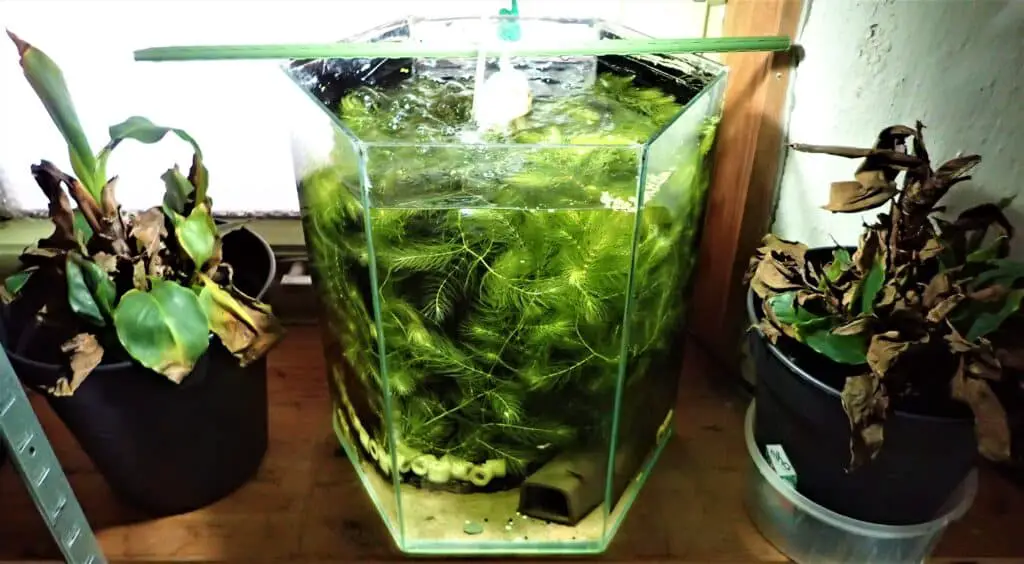
Ah, the age-old question: When choosing the right tank size for your cherry shrimp, there’s a lot to consider. You might be tempted to go for a smaller tank, thinking it’ll be easier to manage. But here’s the catch – smaller tanks can actually be trickier to maintain. They’re more prone to rapid changes in water parameters, which can be stressful for your shrimplets.
On the other hand, a larger tank provides more stability when it comes to parameters like temperature and pH. It also gives your shrimp more space to roam, forage, and breed. A 10-gallon tank is often recommended as a good starting point for beginners. It offers a nice balance between manageability and stability.
However, the “best” tank size depends on your situation. How many shrimp do you plan to keep? How much time can you dedicate to maintenance? How much space do you have available? These are all factors to consider.
Remember, the goal is to create a comfortable and stable environment for your cherry shrimp. So, whether you opt for a 10-gallon tank or a 20-gallon one, the key is to monitor your water parameters closely and ensure your shrimplets have everything they need to thrive.
How to ensure the water parameters are suitable for cherry shrimp?
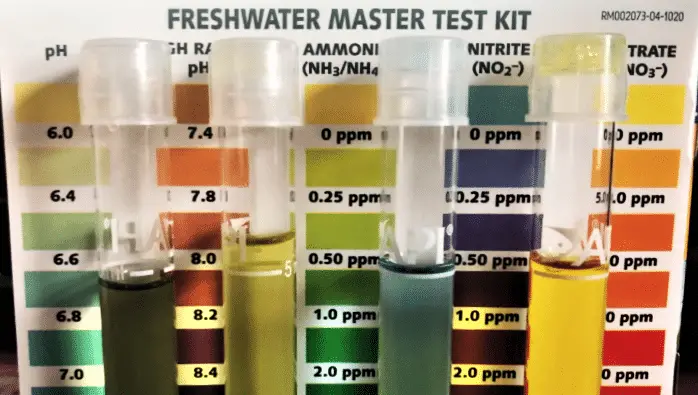
Let’s talk about water parameters. Ensuring the right water conditions is crucial for the health and happiness of your cherry shrimp. But how do you achieve this?
First, let’s understand what “suitable” water parameters mean for cherry shrimp. They thrive in a pH range of 6.5 to 8.0, with a temperature between 20°C to 26°C (68°F to 79°F). They prefer a general hardness (GH) of 4-8 dGH and a carbonate hardness (KH) of 3-15 dKH. The total dissolved solids (TDS) should be between 150-250 ppm, and the ammonia, nitrite, and nitrate levels should be as close to zero as possible.
Achieving these parameters isn’t about adjusting your tap water to fit these exact numbers. Instead, it’s about creating a stable environment where changes are minimal. Rapid fluctuations in water parameters can stress your shrimp, leading to health issues or even death.
Start by testing your tap water to understand its baseline parameters. You can use a water testing kit for this. If your tap water is close to the ideal range for cherry shrimp, you’re in luck! Regular water changes and good tank maintenance should keep your parameters stable.
If your tap water is far off the mark, consider using a shrimp-specific water conditioner or remineralizer. These products adjust the GH, KH, and pH to create suitable conditions for shrimp. Remember to add them gradually and monitor your water parameters closely.
One crucial aspect not to forget is dechlorination. Tap water often contains chlorine or chloramines, which are harmful to shrimp. Always use a dechlorinator when adding new water to your tank to neutralize these chemicals.
When it comes to temperature, cherry shrimp are quite adaptable. If your home stays above 18°C (64°F), you may not need a heater for your shrimp tank. However, a heater can help maintain a stable environment if temperatures fluctuate.
Remember, shrimpfam, patience is key. Don’t rush the process. Take the time to monitor and adjust your water parameters, and your cherry shrimp will thank you for it!
What type of substrate is ideal for a cherry shrimp tank?
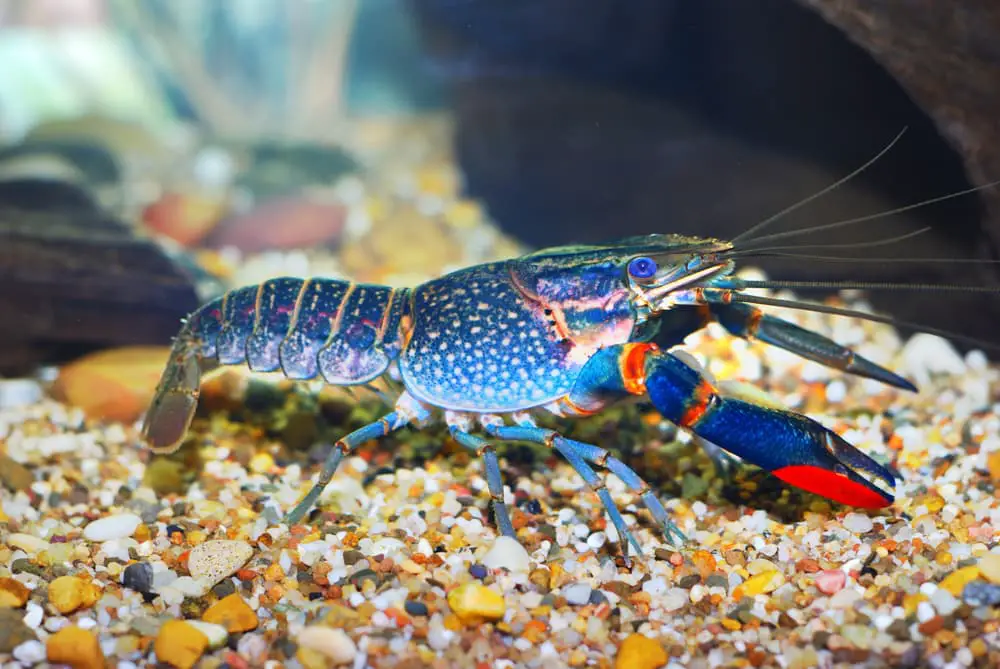
Let’s talk about the ground beneath your shrimplets’ feet – the substrate. Choosing the right substrate is more than just an aesthetic decision. It can impact the health of your cherry shrimp and the overall balance of your tank.
Cherry shrimp aren’t too picky about their substrate. They can happily scuttle around on sand, gravel, or even bare-bottom tanks. However, each type of substrate has its own pros and cons.
Sand is a popular choice. It’s smooth, which is great for your shrimplets’ delicate bodies. It also allows food to rest on the surface, making it easier for your shrimp to find their meals. However, sand can compact over time, which might lead to anaerobic pockets that can harm your tank’s balance.
Gravel, on the other hand, allows for better water flow. It can prevent the issues associated with sand compaction. But food and waste can fall into the gaps between the gravel, making cleaning a bit more challenging.
Then there’s the option of a planted tank substrate. These substrates are designed to support plant growth, which in turn can benefit your shrimp. Plants provide hiding spots, contribute to water quality, and even serve as a food source for your shrimp. Some planted tank substrates also help buffer the water pH, keeping it stable.
So, what’s the ideal substrate for a cherry shrimp tank? It depends on your tank setup and maintenance routine. If you plan to have a heavily planted tank, a planted tank substrate could be your best bet. If you prefer ease of cleaning, gravel might be the way to go. And if you want a smooth surface for your shrimplets, consider sand.
Remember, there’s no one-size-fits-all answer. The best substrate for your cherry shrimp tank is the one that fits you and your shrimps needs and your tank’s conditions.
To Use a Filter or Not: The Shrimp Keeper’s Dilemma
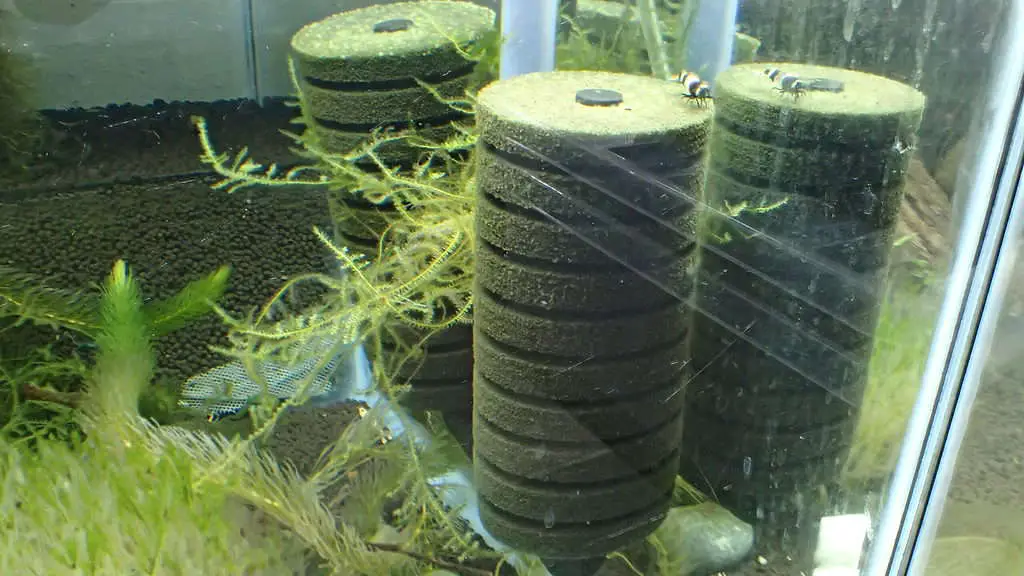
Do you really need one in a cherry shrimp tank? The answer isn’t as straightforward as you might think.
In theory, a cherry shrimp tank can function without a filter. Shrimp produce less waste than fish, and you can maintain water quality with live plants and regular water changes. However, this approach requires careful monitoring and isn’t ideal if your goal is to breed shrimp.
Why? Because a filter does more than clean the water. It provides a home for beneficial bacteria, which are crucial for the nitrogen cycle. These bacteria convert harmful ammonia and nitrite into less harmful nitrate, helping to maintain a stable and healthy environment for your shrimp. This is especially important in a breeding tank, where maintaining optimal water conditions is key.
So, if you decide to use a filter, which one should you choose? In my opinion, a sponge filter is the best choice for a shrimp tank. Sponge filters are gentle, making them safe for shrimp and shrimplets. They also provide a large surface area for beneficial bacteria to colonize and for biofilm to grow, offering a natural food source for your shrimp.
Remember, every shrimp tank is unique, and what works best depends on your specific setup and goals. Whether you choose to use a filter or not, the most important thing is to monitor your water parameters regularly and make adjustments as needed.
How to cycle a tank for cherry shrimp?
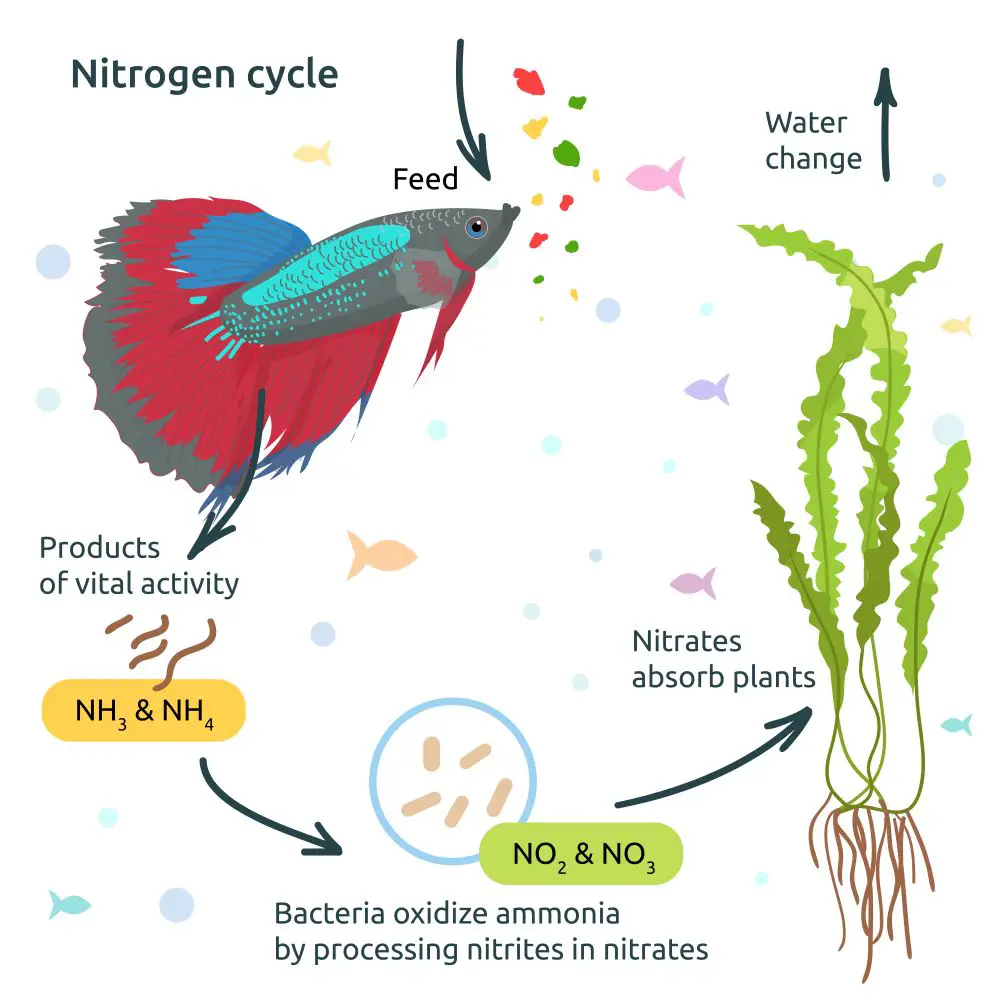
We’re diving into one of the most crucial steps in setting up a cherry shrimp tank – the cycling process. If you’re new to shrimp keeping, you might be wondering, “What on earth is cycling?” Well, let’s demystify it.
Cycling a tank is the process of establishing beneficial bacteria in your aquarium. These bacteria convert harmful ammonia, produced by shrimp waste and uneaten food, into nitrite, and then into less harmful nitrate. This process, known as the nitrogen cycle, is vital for maintaining a healthy environment for your cherry shrimp.
So, how do you cycle a tank for cherry shrimp? It starts with setting up your tank with the substrate, decorations, and filter. Then, you add a source of ammonia to kickstart the cycle. This could be a small amount of fish food , a piece of shrimp (ironically), or a commercial ammonia source.
, a piece of shrimp (ironically), or a commercial ammonia source.
Once you’ve added the ammonia, it’s a waiting game. Over the next few weeks, bacteria will start to colonize your tank and begin the nitrogen cycle. You’ll need to test your water regularly to monitor ammonia, nitrite, and nitrate levels.
At first, you’ll see a spike in ammonia, followed by a rise in nitrite as bacteria start to convert the ammonia. Finally, you’ll see an increase in nitrate, indicating that the second type of bacteria is at work.
The cycle is complete when you can add ammonia to the tank and see it converted to nitrate within 24 hours, with no residual ammonia or nitrite. This process can take anywhere from 2 to 6 weeks, sometimes longer. Patience is key here, shrimpfam!
Once your tank is cycled, it’s ready for your cherry shrimp. But remember, even after the cycle is complete, you’ll need to continue monitoring your water parameters. The nitrogen cycle is a continuous process, and maintaining it is crucial for the health of your shrimplets.
Cycling a tank might seem daunting, but it’s a vital step in shrimp keeping. Take your time, monitor your parameters, and you’ll have a thriving, healthy home for your cherry shrimp before you know it.
What plants and decorations should be included in a cherry shrimp tank?

Let’s talk about turning your shrimp tank into a shrimp paradise. Plants and decorations aren’t just about making your tank look good. They provide hiding spots, breeding grounds, and even food sources for your cherry shrimp. But what plants and decorations should you include?
When it comes to plants, cherry shrimp are quite adaptable. They love plants with broad leaves like Anubias and Java Fern, which provide great surfaces for grazing. Mosses, such as Java Moss or Christmas Moss, are also a big hit. They offer excellent cover and are a favorite breeding ground. Plus, the intricate structures of mosses are perfect for trapping tiny food particles, making them a buffet for your shrimplets.
Floating plants like Duckweed or Frogbit can also be a great addition. They help control nitrates and provide shade, mimicking the natural habitats of cherry shrimp.
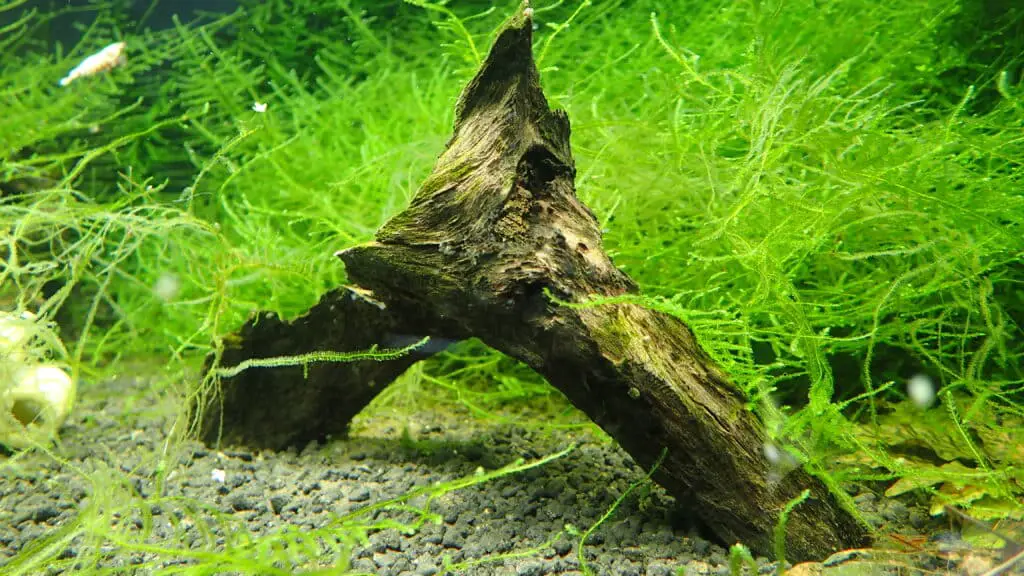
Now, onto decorations. Driftwood and rocks are popular choices. They add a natural aesthetic to your tank and offer additional surfaces for biofilm to grow, providing a natural food source for your shrimp. Just make sure any rocks or driftwood are thoroughly cleaned and safe for aquarium use.
Caves or shrimp hides can also be beneficial, providing your shrimp with a safe place to molt and breed. You can find a variety of these at pet stores, or get creative and make your own.
Remember, the goal is to create an environment that mimics the natural habitat of your cherry shrimp. A tank filled with plants and decorations offers plenty of hiding spots and grazing areas, making it a shrimp paradise.
But, as always, the best plants and decorations depend on your specific setup and the preferences of your shrimp.
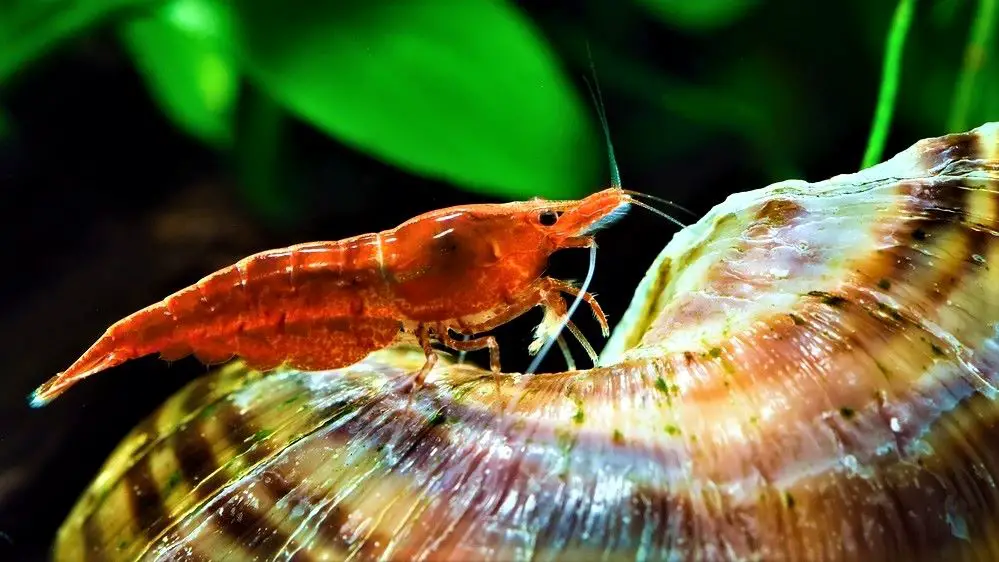
In Closing: Setting Up Your Cherry Shrimp Tank
Ultimately, setting up a cherry shrimp tank involves careful consideration of several factors. From choosing the right tank size, ensuring suitable water parameters, selecting the ideal substrate, to patiently cycling the tank, and finally, creating a comfortable and natural environment with the right plants and decorations. Each step plays a crucial role in ensuring the health and happiness of your cherry shrimp.
Remember, shrimp keeping is a journey, not a destination. It’s about learning, experimenting, and growing along with your shrimpfam. So, don’t be disheartened by challenges along the way. They’re just opportunities to learn and become a better shrimp keeper.
On a final note, let’s touch on the topic of feeding your cherry shrimp. A good rule of thumb is the “2-hour rule”. This means any food that isn’t eaten within two hours should be removed to prevent it from fouling the water. For more details on this, check out our [guide on the 2-hour rule].
If you ever find yourself in need of help or advice, don’t hesitate to reach out. Check out Aquarium Shrimp Keeping on Facebook if you can’t reach me here. We’re a community of shrimp keepers, always ready to lend a helping hand.
Happy Shrimp Keeping, Shrimpfam!
FAQ
Q. How many cherry shrimp can I keep in a tank?
A. The general rule of thumb is to keep 2-5 cherry shrimp per gallon of water. However, this can vary depending on the size of your shrimp and the specific conditions of your tank. Always monitor your tank’s water parameters and shrimp behavior to ensure it’s not overcrowded.
Q. Can cherry shrimp live with fish?
A. While some fish species can coexist peacefully with cherry shrimp, others may see them as a tasty snack. Small, non-aggressive fish like tetras or guppies are usually safe tankmates. Always research potential tankmates thoroughly to ensure they’re compatible with your shrimp.
Q. What do cherry shrimp eat?
A. Cherry shrimp are omnivores and scavengers. They’ll happily munch on algae, biofilm, decaying plant matter, and any food leftovers in the tank. You can also supplement their diet with shrimp pellets or blanched vegetables.
Q. How do I breed cherry shrimp?
A. Cherry shrimp breed quite easily in the right conditions. Keep a mix of males and females in a well-maintained tank with plenty of hiding spots. Once the female is carrying eggs, it’s just a matter of waiting for the shrimplets to hatch.
Q. Can cherry shrimp live in a tank without a filter?
A. While it’s possible for cherry shrimp to survive in a tank without a filter, it’s not ideal. A filter helps maintain water quality and circulation, both of which are important for the health of your shrimp. Sponge filters are a popular choice for shrimp tanks as they provide both filtration and a surface for biofilm to grow.
